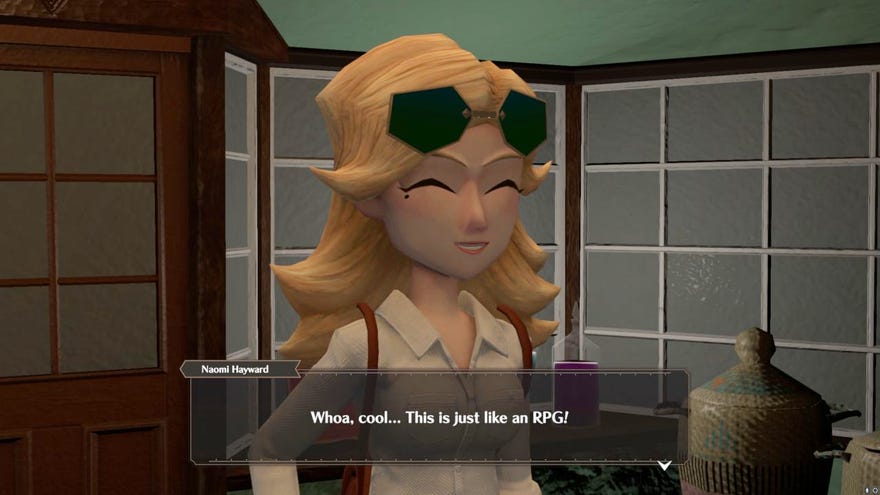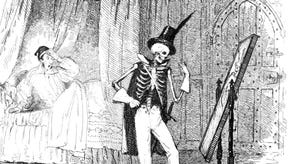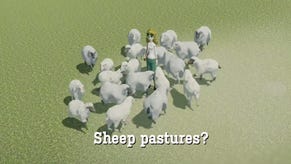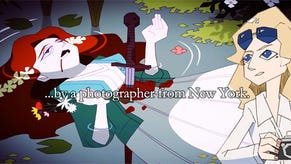The Good Life review: tonally stupid, structurally broken, surprisingly deep and occasionally self-aware
Join the midnight cat-dog jamboree
The Good Life – which has nothing to do with the 1970s British television show about a couple of doom-prepping swingers who owned an allotment in Surbiton – is a colourful open world adventure in which you play an investigative photographer charged with uncovering the secrets of an idyllic English town.
Like so many of Swery’s previous games, most notably Deadly Premonition, The Good Life is characteristically goofy and haphazard. It can be broadly categorised as a daily life simulator — in the vein of Stardew Valley and Animal Crossing, but not like either of those — with a Pokémon Snap style camera mechanic in which you take photographs of interesting things and people about town for kudos and cash rewards. You can also turn into a dog or a cat whenever you like.
The Good Life can be more specifically categorised as what it might look like if the Cotswolds were a poorly maintained Disneyland theme park ride on which you’d died, having become trapped inside one of the animatronic woodland creatures. And in your final seconds of consciousness, and with the ride still running, your brain’s confused synapses concocted a dreamlike series of fetch quests punctuated by extended, inexplicable dialogue.
You play Naomi Hayward, a reporter sent from New York to work off her debts while digging up dirt on the postcard-perfect town of Rainy Woods. Your first scoop is handed to you on night one. During each new moon the residents transform into friendly cats and dogs, who wander about the streets eating out of bins and wearing tiny hats and little waistcoats and such. You can pet them if you like, and eventually, after drinking a potion offered to you by a stranger, you can turn into a cat or a dog yourself.
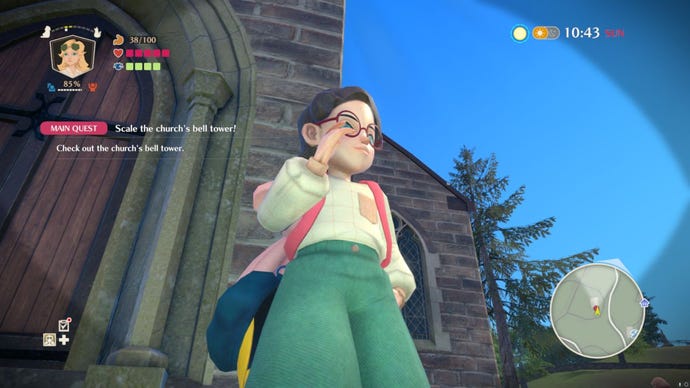
Somehow, that little mystery is not what The Good Life is all about. The village being entirely populated by a cast of shapeshifting night-creeps doesn’t come up very often, partly because of how quickly a whole other mystery comes tumbling out of the mystery chute. There’s been a ritual murder of a beloved local, and it’s up to you – and certainly not the police or anyone who knows the victim – to solve the crime.
From this point onward you’re free to explore Rainy Woods at your leisure, to chat with locals, transform into a cat to climb a handful of specific walls, and take on various quests about town. Days pass into night, characters follow routines, you have a garden where you can grow your own food and a shop where you can buy clothes. As a photographer you earn cash by uploading pictures to social media, earning bonus points for snapping particular objects around town.
But for all of its delightful ideas The Good Life is a technical mess, and usually not an endearing one. The third-person camera swings drunkenly around above your character’s head like an attacking seagull. Naomi maneuvers like a barge. The cute, low-poly art style seen in the early trailers has come out looking all sickly and rotten, rigidly animated and lacking in any detail or lighting effects.

Your ability to freely transform into a dog enables you to see smells – small puffs of green smoke liberally dotted around everywhere – which indicate nearby objects and animals. As a cat you can spot glowing claw marks on certain special walls, which trigger a janky climbing animation as you automatically slither up the sides of buildings to access rooftops. Neither power is especially fun or practical, and they’re only really required during certain quests.
You can catch a cold, or hurt your back, or break a tooth, which happens seemingly at random and drags on your stamina until you bother to scavenge the ingredients required to make the appropriate medicine. Most conversations aren’t voiced, but instead each character has three or four stock phrases they’ll loudly bleatway too often, a form of aural torture not yet known to the Geneva convention.
"The collective amnesia that repeatedly descends creates a haunting atmosphere of quiet, complicit malice..."
There are also some pretty fundamental quest management issues. Only a single job can be active at any given time, effectively rendering all other quests invisible in the world. So if during one quest you accidentally stumble across a character or an item that’s important for something else you’d agreed to do, you’ll miss it completely.
And because you’re free to choose the order in which you take on the three main story threads, the major plot events of each one aren’t mentioned in subsequent chapters. The collective amnesia that repeatedly descends at the close of each act creates a haunting atmosphere of quiet, complicit malice that’s far more unsettling than the town’s monthly transformation into a midnight cat-dog jamboree.
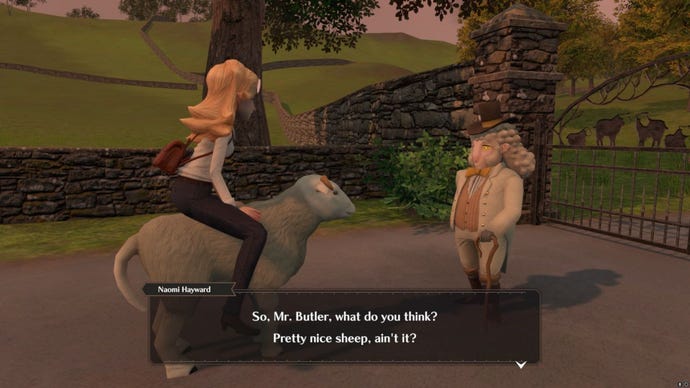
At least The Good Life has a consistently weird tone. Every interaction between characters comprises a sputtering rally of barely comprehensible sentences, careering wildly between important plot points, bafflingly asides, toilet humour, internet references circa 2018, and sometimes just plain old screaming.
Townspeople you’ve never met will act as though they know you. Those you have met will forget who you are. At one point a character used the phrase “shit the bed” so incongruously I had a coughing fit. It’s impossible to know how much of this is a deliberate stylistic choice by the game’s inscrutable author, or whether it really is just earnest, terrible writing.

Naomi has only one emotional gear: a kind of petulant, exasperated rage that gradually chips away at your own psyche until you feel weak and disarmed, like an exhausted fish on the end of a line, and when that moment comes and you stop trying to make sense of it, The Good Life drags you into its distorted clown-world and offers you comfort.
This is a shambolic RPG barely held together by an underutilised photography aspect and an entirely inconsequential shapeshifting ability, wrapped in the familiar trappings of a rural life simulator. The Good Life is tonally stupid, structurally broken, surprisingly deep and occasionally self-aware. It is a confusing and strange and mostly horrible experience, which I feel personally worse off having been through, but am somehow glad that I did.
